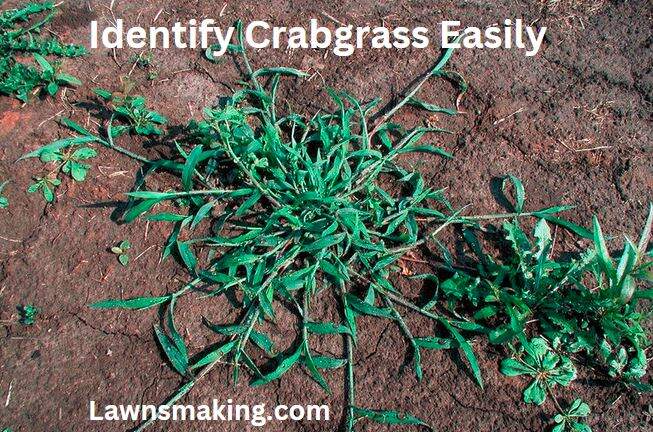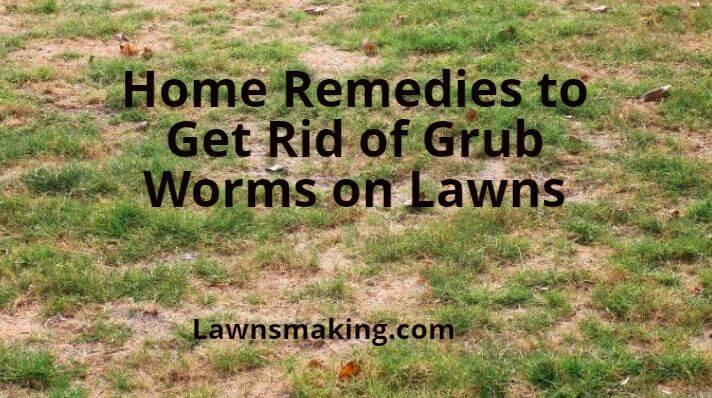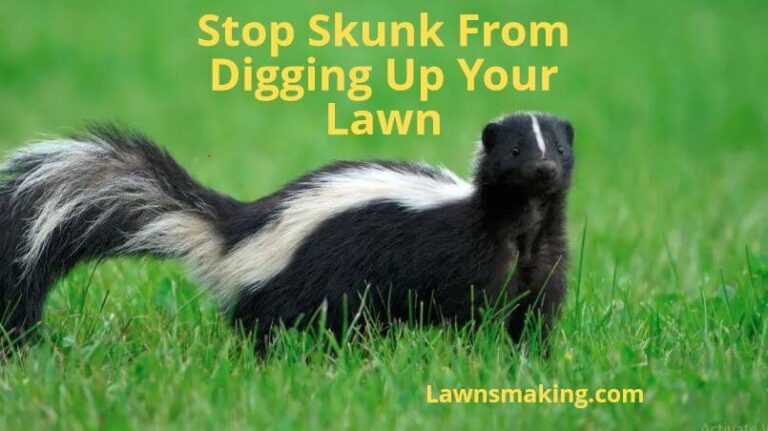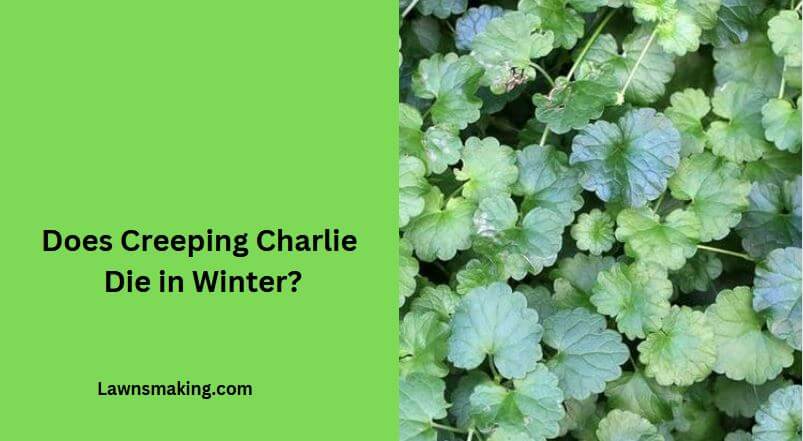
Creeping Charlie is an aggressive, invasive, tough-to-kill weed that, if uncurbed, can quickly take over your lawn. However, you may have noticed that the plant turns brown when temperatures drop during winter, and the stems and leaves fall off. Hence the pertinent question, “Does creeping Charlie die in winter, or does it just go dormant?”
Creeping Charlie doesn’t die in winter but goes dormant. Dormancy is an adaptive mechanism that allows it to survive in harsh conditions. Even though its stems and leaves dry and fall off, the roots remain alive underground, awaiting favorable conditions in spring to regrow.
This post is for you if you want to eliminate creeping Charlie from your lawn permanently. Keep reading to learn how you can successfully achieve it and much more.
Does Creeping Charlie Die in Winter? The Permanent Killer
| Botanical Name | Glechoma hederacea |
| Common Names | Creeping Charlie, Ground Ivy, Cat’s Foot, Gill-over-the-ground, Alehoof, Tunhoof |
| Plant Type | Herbaceous Perennial Weed |
| Hardiness Zones | 2 -12 |
| Identifying Features | Bright green,scalloped-edge leaves, square-shaped stems, small, lavender flowers, strong, minty odor |
| Mode of Dispersion | Seeds, stolons, roots |
| Growing Conditions | Shady areas, poorly-drained and semi-fertile soils |
Creeping Charlie doesn’t die in winter. As earlier said, it undergoes winter dormancy. Dormancy is an adaptation for many plants, allowing them to survive during unfavorable growing conditions.
Find Out: Can Bermuda Grass Choke Out Weeds?
Creeping Charlie begins preparation for dormancy in the fall (late September). A drop in daytime temperatures below 65°F (18.33°F) signals the plant to begin conserving energy. The weed starts storing food in the roots during this time.
When winter begins, it sheds the stems and leaves, leaving the roots functioning underground. Creeping Charlie starts regenerating in early spring when temperatures return to optimum.
And even though its seeds are usually viable for under a year, evidence indicates that some can persist in the soil for several years under certain conditions. This shows that the seeds can germinate and grow even after the harsh winter conditions.
Find Out: How to Stop Skunk From Digging Up Lawn
What Kills Creeping Charlie Permanently?
Combining proper removal techniques with long-term cultural methods to prevent its spread will kill creeping Charlie permanently.
Creeping Charlie is difficult to kill because it is perennial and resilient. It can morphologically adapt to environmental changes and isn’t prone to pests and diseases.
The weed primarily reproduces vegetatively. It rapidly spreads laterally by establishing stolons. This means that, even if you pull out Charlie weed in one area, there’ll still be more roots to sustain it and spread even further.
So, to kill and permanently prevent it from returning, you’ll first need to utilize proper removal techniques. These can either be mechanical or chemical. Next, you’ll implement the cultural methods of Charlie weed control.
To know which cultural methods to use, first understand which conditions favor the growth of this weed. Creeping Charlie likes moist, nutrient-poor soils and thrives in shady areas. So, correcting these conditions is the best way to make your lawn outcompete the weed.
Ensure your lawn has well-drained and fertile soil and receives maximum sunlight. Here’s how:
- Prune trees and clear shrubs to improve light conditions.
- Water your lawn deeply but infrequently and mulch to improve drainage.
- Aerate your lawn to reduce compaction. Compaction reduces drainage.
- Increase fertility by adding organic matter, such as compost manure.
It’s also best to plant shade-tolerant grass after removing Charlie weed to out-compete it. Fine-leaf fescues and rough bluegrass are the best for shady areas. You’ll want to maintain healthy and dense turf grass by:
- Mowing at 3 inches height to increase leaf surface area
- Irrigating and fertilizing adequately
- Controlling weeds
- Overseeding bare patches to prevent the growth of creeping Charlie
Does Borax Really Kill Creeping Charlie?
Borax kills creeping Charlie. It contains boron, an essential plant micronutrient, only in minute doses but highly toxic in hefty amounts. Treating creeping Charlie with large quantities of borax will cause wilting and eventual death.
Various studies have been conducted on whether boron can effectively control creeping Charlie. Some showed positive results, while others were not substantive.
In one study where researchers compared the efficacy of iron products against boron products in the control of creeping Charlie, results showed that boron reduced more than 77% of the weed in a single application.
Results from another study by Iowa State University proved that borax could match and even exceed the efficacy of conventional herbicides in controlling creeping Charlie.
Although these studies confirm the effectiveness of borax, experts strongly discourage its use because:
- Its efficacy on various soil types is yet to be proven.
- Boron doesn’t dissipate quickly in the soil and can stay for several years. Excessive use causes build-up that permanently sterilizes the ground, preventing it from supporting lawn grasses and other plants.
- Borax isn’t registered for weed control; using it could be illegal in some states. Moreover, there isn’t a laid-out recipe for application. We can’t determine the amount to apply in any given area. Using too little will lead to poor weed control, while too much will damage the soil and nearby plants.
Can You Mix Borax and Vinegar to Kill Creeping Charlie?
Sadly, there isn’t enough information to suggest mixing borax and vinegar to eliminate creeping charlie. However, both products are strong, natural weed killers and can be used individually.
It’s noteworthy that borax is a weak base while vinegar is a weak acid. Based on the amounts involved during mixing, the resultant solution will either be neutral, a weaker acid, or alkaline. Experts have yet to establish this solution’s effectiveness in controlling creeping Charlie.
Why Kill Creeping Charlie? 3 Reasons
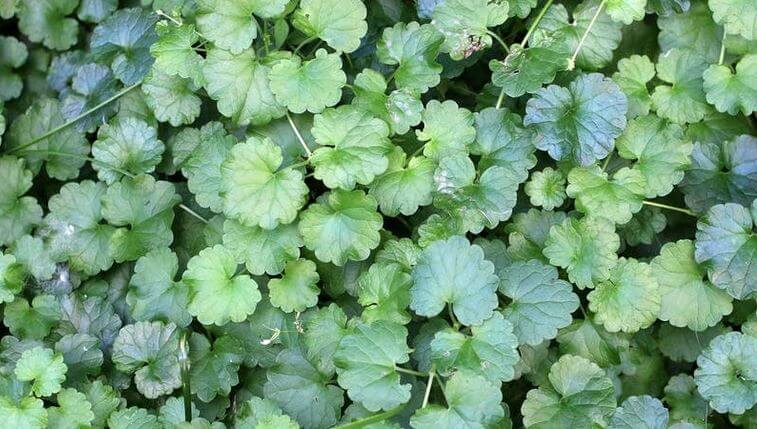
Creeping Charlie can be an attractive ground cover with its pretty, tiny violet flowers. It’s a great option in environments where limited turfgrass varieties will do well in shades, slopes, and semi-fertile soils.
Moreover, people have used it as medicine and a tasty ingredient in salads, soups, and drinks for centuries. Pollinators such as bees and butterflies love it too, since it’s a good nectar source.
But, with all these benefits, why kill creeping Charlie?
It’s Difficult to Control from Spreading
It’s best to kill Charlie weed as soon as it appears because it will be challenging to control once it overpowers your grass and plants. This is especially difficult in areas with vegetation susceptible to chemical herbicides.
Controlling Charlie weed requires preventing its seeds from germinating, creeping stems from spreading, and rhizomes from generating new shoots. Removing them requires you to be thorough since leaving any little bits will only allow them to return even more vital.
And even if you succeed in eliminating the weed but fail to address the turf issues, new seeds could be dispersed by birds or wind, resulting in re-invasion.
It’s Allelopathic
While Charlie weed may look attractive creeping over the sides of hanging baskets and containers, it’s not good on lawns and gardens. Once it creeps into your property, it colonizes the area, killing the surrounding vegetation by depriving it of water and nutrition.
A 1986 study by Rice EL. indicates decreased seed germination of the vegetation growing around creeping Charlie.
It’s Toxic to Animals
Despite being edible, creeping Charlie can have undesirable effects on the human digestive system when consumed in large quantities. Pregnant and lactating women should also avoid this weed. It contains the essential oil pulegone, which can cause acute multiorgan injury in fetuses and infants.
Charlie weed is also poisonous in large doses to animals, especially goats and horses, and can result in digestive, respiratory, heart, or kidney problems. If you’re a rancher, keeping this weed at bay is best.
How Long Does It Take to Kill Creeping Charlie?
It can take several weeks, months, or even years to kill creeping Charlie as it’s highly invasive and resilient. The amount of time required will depend on a few factors, including the following:
- Degree of Infestation: The degree of invasion determines the duration to remove creeping Charlie completely. The larger the area of infestation, the harder and longer it will take. It’s, therefore, best to remove the weed immediately after it appears for easier management.
- Removal Technique: Your removal method will impact the time taken to kill creeping Charlie successfully. Some may need several applications over an extended period. Techniques such as solarization can take up to a year.
- Environmental Conditions: If the location’s conditions continue to encourage creeping Charlie’s growth, it will take longer to eradicate it. Ensure to correct the conditions that favor this weed to discourage re-invasion.
- Time of the Year: Some removal techniques can be effective over a short time during specific periods. For instance, using the hand-pulling method in spring before the weed begins flowering is most effective and takes a shorter period to achieve the desired results.
How to Remove Creeping Charlie on Lawns (3 Ways)
While creeping Charlie can be challenging to remove, there are proven techniques to achieve this. Some methods are more effective than others. Others may require more time or physical effort; therefore, you must be patient.
You’ll want to stick to one technique until the end for successful results. Combining various methods can lead to additional problems. You can, however, change strategies if the first one didn’t bring the desired results.
Remember to improve turf health and density or replace it with shade-tolerant grasses once you remove the weeds. That said, here are ways to remove creeping Charlie.
Manual Removal
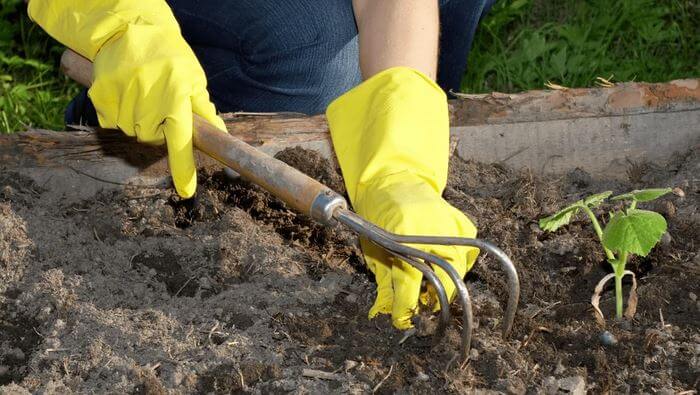
Removing creeping Charlie manually is the most affordable and safest method for surrounding plants, pets, and children, as no chemicals are needed. You can pull the weed using your hands or dig up using a hoe or dethatching rake, as shown above.
This method is, however, not recommended in large areas of invasions as it’s labor intensive and can take far too long. Moreover, it’s the least successful method because it’s highly possible to leave little bits of the weed behind, increasing the chances of re-infestation.
You might also need multiple pulling sessions to eliminate the weed.
Nevertheless, pull out small patches of Charlie weed together with the roots, ensuring no pieces are left behind. To achieve this, water the area to soften the soil or wait after the rain to remove them. Dispose of the weeds in a garbage bin so they can’t spread again.
Chemical Control
If Charlie weed has taken up the better part of your lawn, you may need a chemical weed killer. It is the quickest and most effective way of saying goodbye to the weed. But, it’s not eco-friendly or safe to use around children and pets.
You can use a non-selective herbicide only if you want to kill everything in the area and grow afresh.
Alternatively, a pre-emergent broadleaf herbicide will take care of creeping Charlie without you worrying about destroying other plants. Those that contain the salt of dicamba or triclopyr work best.
So, check the product labels and only choose one with these active ingredients.
Besides following the manufacturer’s directions carefully, here are some tips for using a chemical herbicide to control creeping Charlie.
- It’s best to apply the chemicals when the weed is actively growing (in summer) or preparing for dormancy (in fall). During these times, the roots will rapidly absorb the product, killing the weed effectively.
- Choose a calm day so the wind doesn’t blow the product onto other plants. Similarly, treat the weeds when you’re sure there’ll be no precipitation within 24 hours of application. Rain or snow will dilute the herbicide, lowering its effectiveness.
- Re-apply the herbicide if you still notice some weeds growing several weeks or months after application. Wait until all the weeds have been killed, then rake up the dead debris and reseed the area with your desired turf.
Biological Control
Biological control of creeping charlie entails disrupting its biological processes to suppress it.
The most common method is smothering the weeds by covering the area with a large, black, air-tight plastic tarp during the hot, dry seasons. This way, you’ll deprive the plants of sunlight and air. The soil will also be heated to temperatures that hinder the plants’ survival.
This is the easiest and most eco-friendly method of weed control. It can, however, take up to a year to completely eliminate tough Charlie.
Final Points
Still wondering, “does creeping Charlie die in winter or does it just go dormant?” I guess not. While it may look like it dies in winter, it goes dormant.
Killing Charlie weed is difficult, but it is possible with the proper techniques and timing. You’ll be more successful if you try the removal methods suggested here. Even more, change the growing conditions of the weed to give your turf grass the best opportunity to outperform it.
